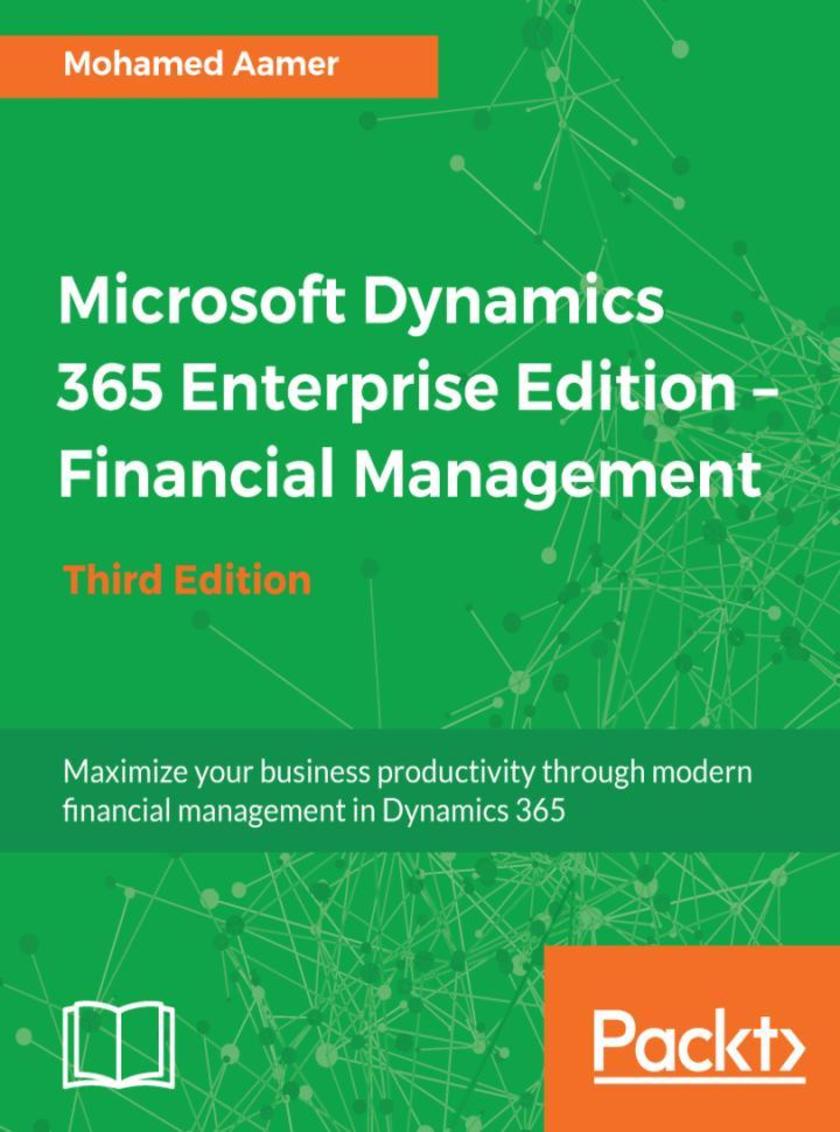
Microsoft Dynamics 365 Enterprise Edition – Financial Management - Third Edition
¥99.18
Boost your accounting and financial skills with Microsoft Dynamics 365 About This Book ? Make real-time data-driven decisions for your enterprise with Microsoft Dynamics 365 Enterprise edition ? Configure and set up the Microsoft Dynamics 365 financial module via highly useful tips and tricks ? Administer customer relations and plan enterprise resources with this systematic guide Who This Book Is For This book is for application consultants, solution architects, controllers, CFOs, pre-sales and other professionals who are involved in a Microsoft Dynamics 365 for finance and operation implementation. Basic knowledge of financial terms, concepts, and terminologies is required. What You Will Learn ? Examine the business logic behind the financial functionalities of Microsoft Dynamics 365 FFO ? Set up and configure the core modules of financial management ? Grasp the key control points of financial management ? Explore intercompany and consolidation in Microsoft Dynamics 365 FFO ? Understand multi-currency sales, tax mechanisms, and budgeting capabilities in Microsoft Dynamics 365 FFO ? Get to grips with month/year-end period close functionality ? Understand the account payable and receivable module ? Use Microsoft Dynamics 365 to create financial reports In Detail Microsoft Dynamics 365 for finance and operations is a rapidly growing application and is widely used in enterprise organizations. Because of its ability to maximize business productivity, it is a fast-growing business application package in the ERP market. We will start by looking into ERP concepts, implementation needs, and interface design, giving you basic knowledge of financial management aspects and explaining key concepts along the way. To begin with, you'll be taken through the general ledger and financial dimension functions. You'll later learn about the sales tax mechanism and multi-currency in Microsoft Dynamics 365. We tackle each topic with focused examples and explanations on topics such as payable/receivable accounts, forecasting, cash and bank management, budgeting planning/control, and fixed assets. Finally, we walk you through intercompany, consolidation, costing basics, and financial reporting. By the end of this book, your finance team will have a much richer understanding of Microsoft Dynamics 365 for finance and operations and its powerful capabilities. Style and approach This book is a step-by-step guide focusing on implementing Dynamics 365 financial management for your organization.
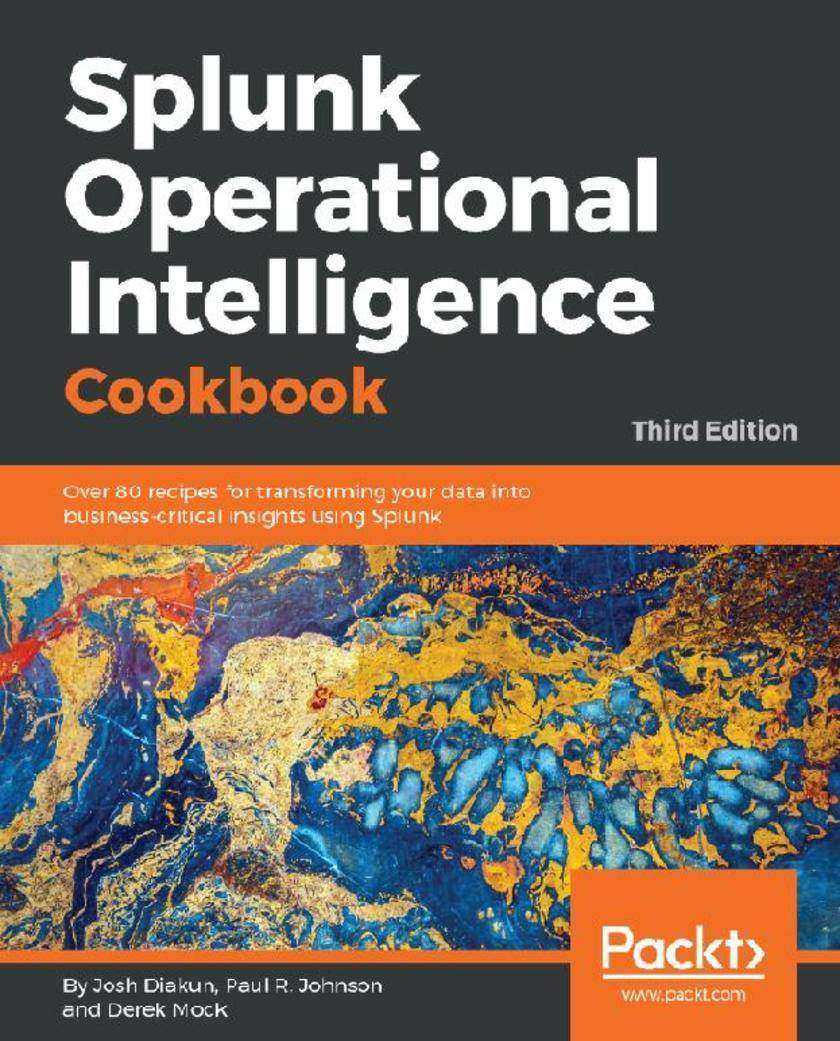
Splunk Operational Intelligence Cookbook
¥99.18
Leverage Splunk's operational intelligence capabilities to unlock new hidden business insights and drive success About This Book ? Tackle any problems related to searching and analyzing your data with Splunk ? Get the latest information and business insights on Splunk 7.x ? Explore the all new machine learning toolkit in Splunk 7.x Who This Book Is For This book is intended for data professionals who are looking to leverage the Splunk Enterprise platform as a valuable operational intelligence tool. The recipes provided in this book will appeal to individuals from all facets of business, IT, security, product, marketing, and many more! Even the existing users of Splunk who want to upgrade and get up and running with Splunk 7.x will find this book to be of great value. What You Will Learn ? Learn how to use Splunk to gather, analyze, and report on data ? Create dashboards and visualizations that make data meaningful ? Build an intelligent application with extensive functionalities ? Enrich operational data with lookups and workflows ? Model and accelerate data and perform pivot-based reporting ? Apply ML algorithms for forecasting and anomaly detection ? Summarize data for long term trending, reporting, and analysis ? Integrate advanced JavaScript charts and leverage Splunk's API In Detail Splunk makes it easy for you to take control of your data, and with Splunk Operational Cookbook, you can be confident that you are taking advantage of the Big Data revolution and driving your business with the cutting edge of operational intelligence and business analytics. With more than 70 recipes that demonstrate all of Splunk’s features, not only will you find quick solutions to common problems, but you’ll also learn a wide range of strategies and uncover new ideas that will make you rethink what operational intelligence means to you and your organization. You’ll discover recipes on data processing, searching and reporting, dashboards, and visualizations to make data shareable, communicable, and most importantly meaningful. You’ll also find step-by-step demonstrations that walk you through building an operational intelligence application containing vital features essential to understanding data and to help you successfully integrate a data-driven way of thinking in your organization. Throughout the book, you’ll dive deeper into Splunk, explore data models and pivots to extend your intelligence capabilities, and perform advanced searching with machine learning to explore your data in even more sophisticated ways. Splunk is changing the business landscape, so make sure you’re taking advantage of it. Style and approach With more than 70 recipes that demonstrate all of Splunk’s features, not only will you find quick solutions to common problems, but you’ll also learn a wide range of strategies and uncover new ideas that will make you rethink what operational intelligence means to you and your organization.
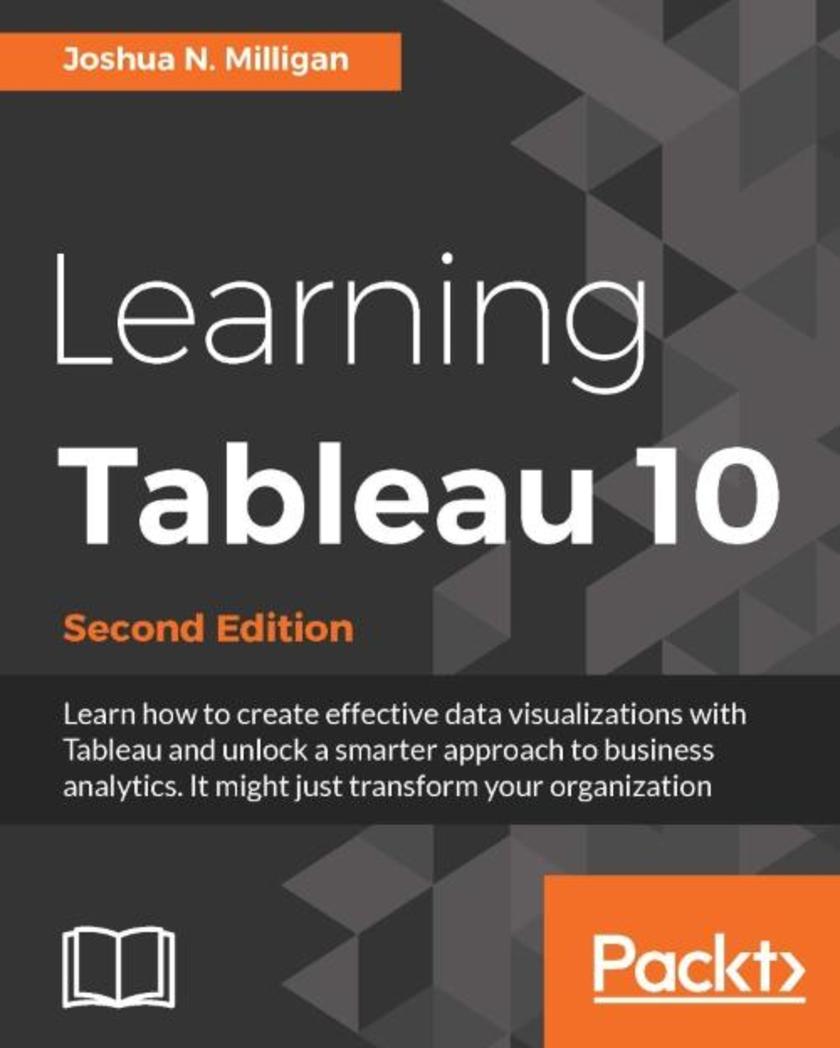
Learning Tableau 10 - Second Edition
¥99.18
Learn how to create effective data visualizations with Tableau and unlock a smarter approach to business analytics. It might just transform your organization About This Book Create stylish visualizations and dashboards that explain complexity with clarity Learn effective data storytelling to transform how your business uses ideas and makes decisions Explore all the new features in Tableau 10 and start to redefine what business analytics means to your organization Who This Book Is For Got dataNot sure what to make of itThis is the guide for you – whether you’ve been working with Tableau for years or are just beginning your adventure into business analytics. What You Will Learn Find out how to build effective visualizations and dashboards Prepare and clean your data so you can be sure Tableau is finding answers to your questions – not raising more problems Discover how to create advanced visualizations that explain complexity with clarity and style Dig deeper into your data with clustering and distribution models that allow you to analyze trends and make forecasts Learn how to use data storytelling to aid decision-making and strategy Share dashboards and visualizations to cultivate a culture where data is available and valued In Detail Tableau has for some time been one of the most popular Business Intelligence and data visualization tools available. WhyBecause, quite simply, it’s a tool that’s responsive to the needs of modern businesses. But it’s most effective when you know how to get what you want from it – it might make your business intelligent, but it isn’t going to make you intelligent… We’ll make sure you’re well prepared to take full advantage of Tableau 10’s new features. Whether you’re an experienced data analyst that wants to explore 2016’s new Tableau, or you’re a beginner that wants to expand their skillset and bring a more professional and sharper approach to their organization, we’ve got you covered. Beginning with the fundamentals, such as data preparation, you’ll soon learn how to build and customize your own data visualizations and dashboards, essential for high-level visibility and effective data storytelling. You’ll also find out how to so trend analysis and forecasting using clustering and distribution models to inform your analytics. But it’s not just about you – when it comes to data it’s all about availability and access. That’s why we’ll show you how to share your Tableau visualizations. It’s only once insights are shared and communicated that you – and your organization – will start making smarter and informed decisions. And really, that’s exactly what this guide is for. Style and approach Practical yet comprehensive, this Tableau guide takes you from the fundamentals of the tool before diving deeper into creating advanced visualizations. Covering the latest features found in Tableau 10, this might be the guide that transforms your organization.
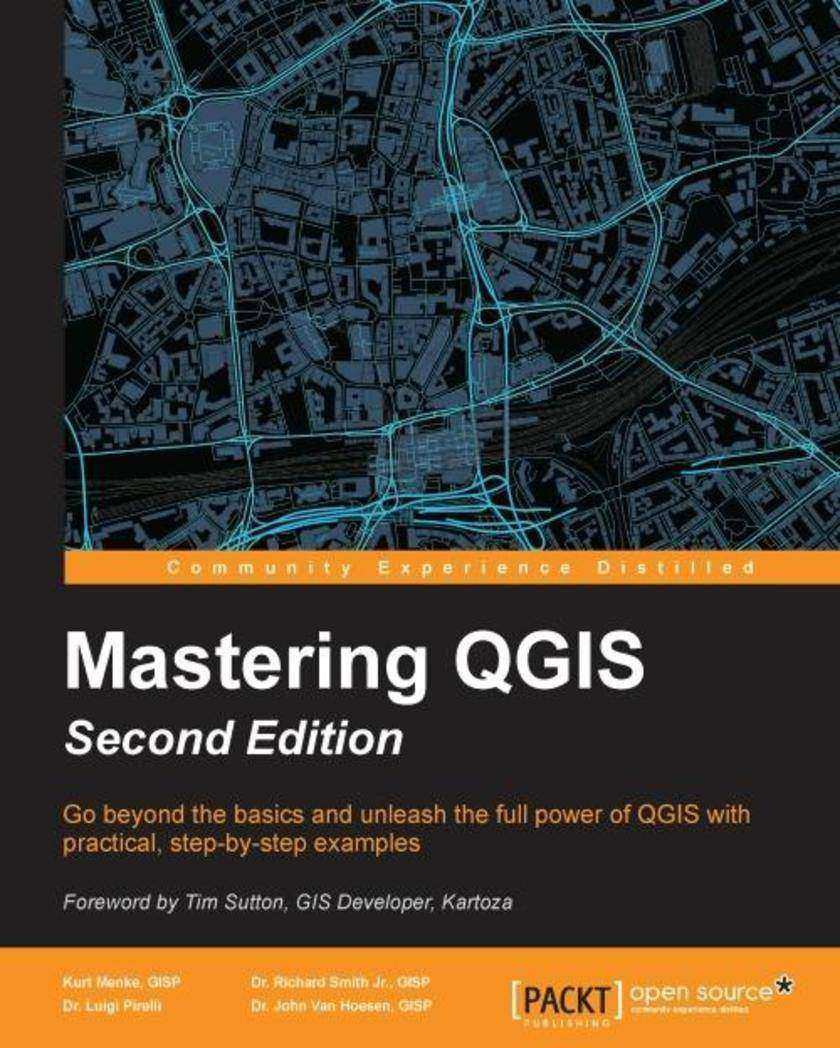
Mastering QGIS - Second Edition
¥99.18
Go beyond the basics and unleash the full power of QGIS with practical, step-by-step examples About This Book This book is your one-stop solution to all of your GIS needs using the open source QGIS Master QGIS by learning about database integration, geoprocessing tools, Python *s, advanced cartography, and custom plugins This example-rich, practical guide will help you create sophisticated analyses and maps Who This Book Is For If you are a GIS professional, a consultant, a student, or perhaps a fast learner who wants to go beyond the basics of QGIS, then this book is for you. It will prepare you to realize the full potential of QGIS. What You Will Learn Create and manage a spatial database Get to know advanced techniques to style GIS data Prepare both vector and raster data for processing Add heat maps, live layer effects, and labels to your maps Master LAStools and GRASS integration with the Processing Toolbox Edit and repair topological data errors Automate workflows with batch processing and the QGIS Graphical Modeler Integrate Python *ing into your data processing workflows Develop your own QGIS plugin In Detail QGIS is an open source solution to GIS. It is widely used by GIS professionals all over the world. It is the leading alternative to the proprietary GIS software. Although QGIS is described as intuitive, it is also by default complex. Knowing which tools to use and how to apply them is essential to producing valuable deliverables on time. Starting with a refresher on the QGIS basics, this book will take you all the way through to creating your first custom QGIS plugin. From the refresher, we will recap how to create, populate, and manage a spatial database. You’ll also walk through styling GIS data, from creating custom symbols and color ramps to using blending modes. In the next section, you will discover how to prepare vector, heat maps, and create live layer effects, labeling, and raster data for processing. You’ll also discover advanced data creation and editing techniques. The last third of the book covers the more technical aspects of QGIS such as using LAStools and GRASS GIS’s integration with the Processing Toolbox, how to automate workflows with batch processing, and how to create graphical models. Finally, you will see how to create and run Python data processing *s and write your own QGIS plugin with pyqgis. By the end of the book, you will understand how to work with all the aspects of QGIS, and will be ready to use it for any type of GIS work. Style and approach This step-by-step comprehensive guide will let you dig your teeth into working with spatial databases, creating your own QGIS plugins, and creating your own custom graphical models.
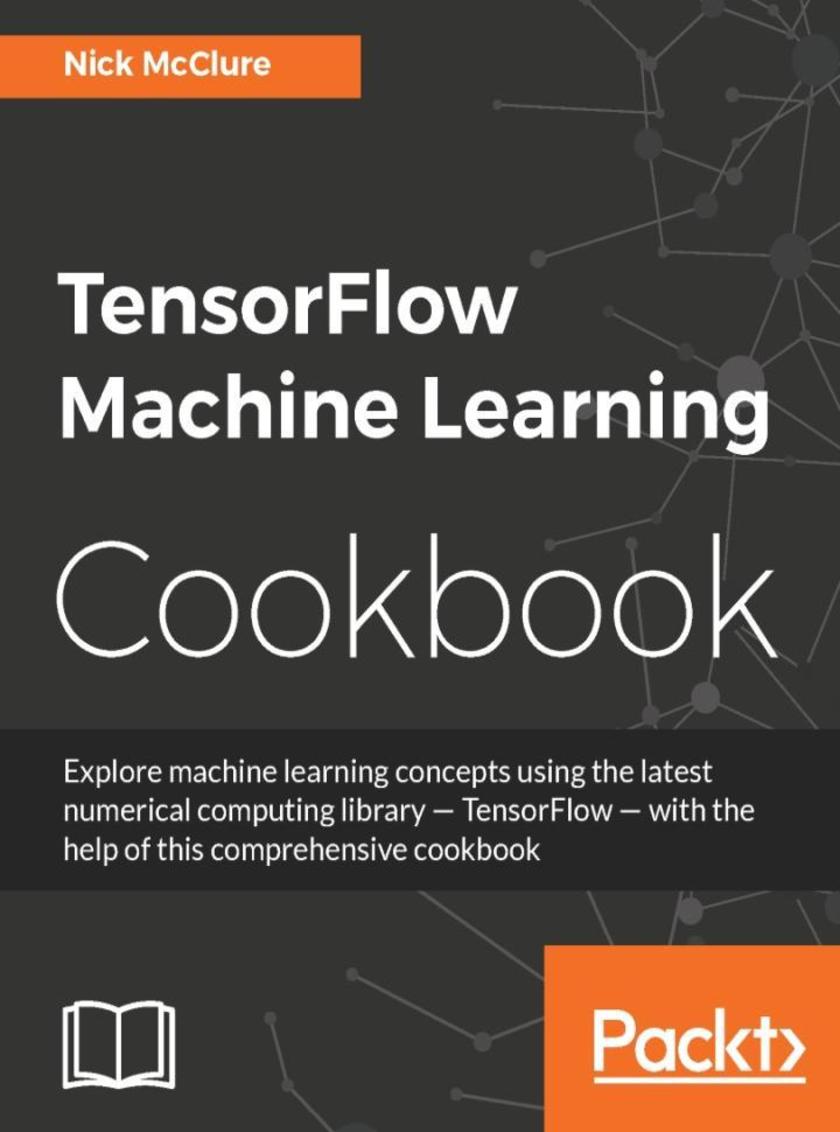
TensorFlow Machine Learning Cookbook
¥99.18
Explore machine learning concepts using the latest numerical computing library — TensorFlow — with the help of this comprehensive cookbook About This Book Your quick guide to implementing TensorFlow in your day-to-day machine learning activities Learn advanced techniques that bring more accuracy and speed to machine learning Upgrade your knowledge to the second generation of machine learning with this guide on TensorFlow Who This Book Is For This book is ideal for data scientists who are familiar with C++ or Python and perform machine learning activities on a day-to-day basis. Intermediate and advanced machine learning implementers who need a quick guide they can easily navigate will find it useful. What You Will Learn Become familiar with the basics of the TensorFlow machine learning library Get to know Linear Regression techniques with TensorFlow Learn SVMs with hands-on recipes Implement neural networks and improve predictions Apply NLP and sentiment analysis to your data Master CNN and RNN through practical recipes Take TensorFlow into production In Detail TensorFlow is an open source software library for Machine Intelligence. The independent recipes in this book will teach you how to use TensorFlow for complex data computations and will let you dig deeper and gain more insights into your data than ever before. You’ll work through recipes on training models, model evaluation, sentiment analysis, regression analysis, clustering analysis, artificial neural networks, and deep learning – each using Google’s machine learning library TensorFlow. This guide starts with the fundamentals of the TensorFlow library which includes variables, matrices, and various data sources. Moving ahead, you will get hands-on experience with Linear Regression techniques with TensorFlow. The next chapters cover important high-level concepts such as neural networks, CNN, RNN, and NLP. Once you are familiar and comfortable with the TensorFlow ecosystem, the last chapter will show you how to take it to production. Style and approach This book takes a recipe-based approach where every topic is explicated with the help of a real-world example.
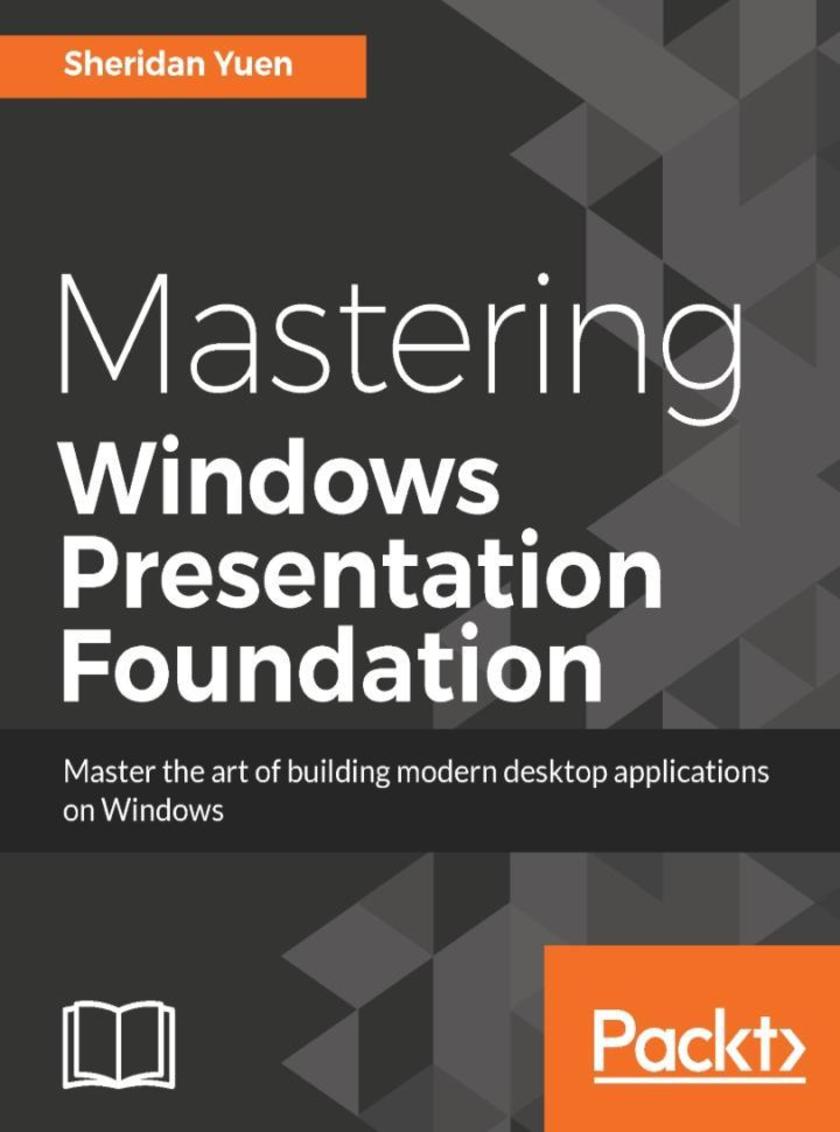
Mastering Windows Presentation Foundation
¥99.18
Master the art of building modern desktop applications on Windows About This Book Learn how to use the MVVM software architectural pattern and see the benefits of using it with Windows Presentation Fountain (WPF) Explore various ways to enhance efficiency through performance tuning and UI automation Obtain a deep understanding of data validation and understand various methods that suit different situations Who This Book Is For This book is for working developers with a moderate level of knowledge about Windows Presentation Foundation. It will also be of special interest to ambitious individuals who want to know more about application architecture. It is also suitable for those who just want to learn how to build visually stunning user interfaces. What You Will Learn Use MVVM to improve workflow Create visually stunning user interfaces Perform data binds proficiently Implement advanced data validation Locate and resolve errors quickly Master practical animations Improve your applications’ performance In Detail Windows Presentation Foundation is rich in possibilities when it comes to delivering an excellent user experience. This book will show you how to build professional-grade applications that look great and work smoothly. We start by providing you with a foundation of knowledge to improve your workflow – this includes teaching you how to build the base layer of the application, which will support all that comes after it. We’ll also cover the useful details of data binding. Next, we cover the user interface and show you how to get the most out of the built-in and custom WPF controls. The final section of the book demonstrates ways to polish your applications, from adding practical animations and data validation to improving application performance. The book ends with a tutorial on how to deploy your applications and outlines potential ways to apply your new-found knowledge so you can put it to use right away. The book also covers 2D and 3D graphics, UI automation, and performance tuning. Style and approach Filled with intriguing and practical examples, this book delineates concepts that will help you take your WPF skills to the next level.
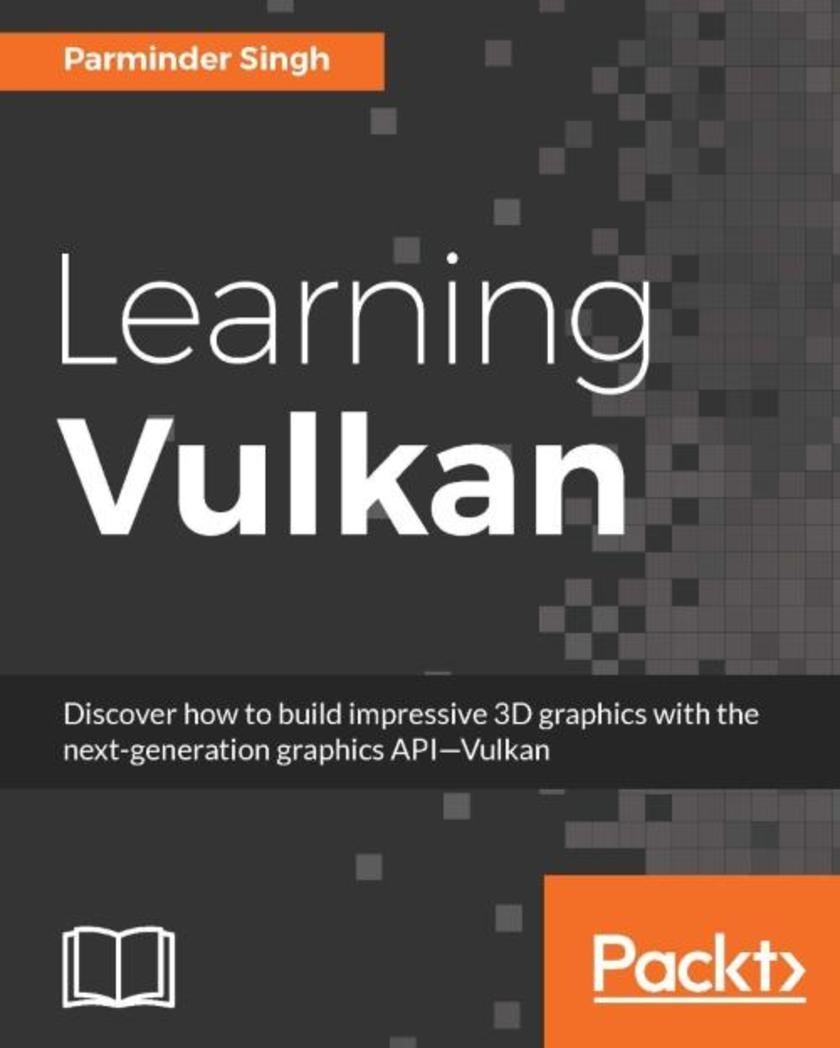
Learning Vulkan
¥99.18
Discover how to build impressive 3D graphics with the next-generation graphics API—Vulkan About This Book Get started with the Vulkan API and its programming techniques using the easy-to-follow examples to create stunning 3D graphics Understand memory management in Vulkan and implement image and buffer resources Get hands-on with the drawing process and synchronization, and render a 3D graphics scene with the Vulkan graphics pipeline Who This Book Is For This book is ideal for graphic programmers who want to get up and running with Vulkan. It’s also great for programmers who have experience with OpenGL and other graphic APIs who want to take advantage of next generation APIs. A good knowledge of C/C++ is expected. What You Will Learn Learn fundamentals of Vulkan programing model to harness the power of modern GPU devices. Implement device, command buffer and queues to get connected with the physical hardware. Explore various validation layers and learn how to use it for debugging Vulkan application. Get a grip on memory management to control host and device memory operations. Understand and implement buffer and image resource types in Vulkan. Define drawing operations in the Render pass and implement graphics pipeline. Manage GLSL shader using SPIR-V and update the shader resources with de*or sets and push constants. Learn the drawing process, manage resources with synchronization objects and render 3D scene output on screen with Swapchain. Bring realism to your rendered 3D scene with textures, and implement linear and optimal textures In Detail Vulkan, the next generation graphics and compute API, is the latest offering by Khronos. This API is the successor of OpenGL and unlike OpenGL, it offers great flexibility and high performance capabilities to control modern GPU devices. With this book, you'll get great insights into the workings of Vulkan and how you can make stunning graphics run with minimum hardware requirements. We begin with a brief introduction to the Vulkan system and show you its distinct features with the successor to the OpenGL API. First, you will see how to establish a connection with hardware devices to query the available queues, memory types, and capabilities offered. Vulkan is verbose, so before diving deep into programing, you’ll get to grips with debugging techniques so even first-timers can overcome error traps using Vulkan’s layer and extension features. You’ll get a grip on command buffers and acquire the knowledge to record various operation commands into command buffer and submit it to a proper queue for GPU processing. We’ll take a detailed look at memory management and demonstrate the use of buffer and image resources to create drawing textures and image views for the presentation engine and vertex buffers to store geometry information. You'll get a brief overview of SPIR-V, the new way to manage shaders, and you'll define the drawing operations as a single unit of work in the Render pass with the help of attachments and subpasses. You'll also create frame buffers and build a solid graphics pipeline, as well as making use of the synchronizing mechanism to manage GPU and CPU hand-shaking. By the end, you’ll know everything you need to know to get your hands dirty with the coolest Graphics API on the block. Style and approach This book takes a practical approach to guide you through the Vulkan API, and you will get to build an application throughout the course of the book. Since you are expected to be familiar with C/C++, there is not much hand-holding throughout the course of the book.
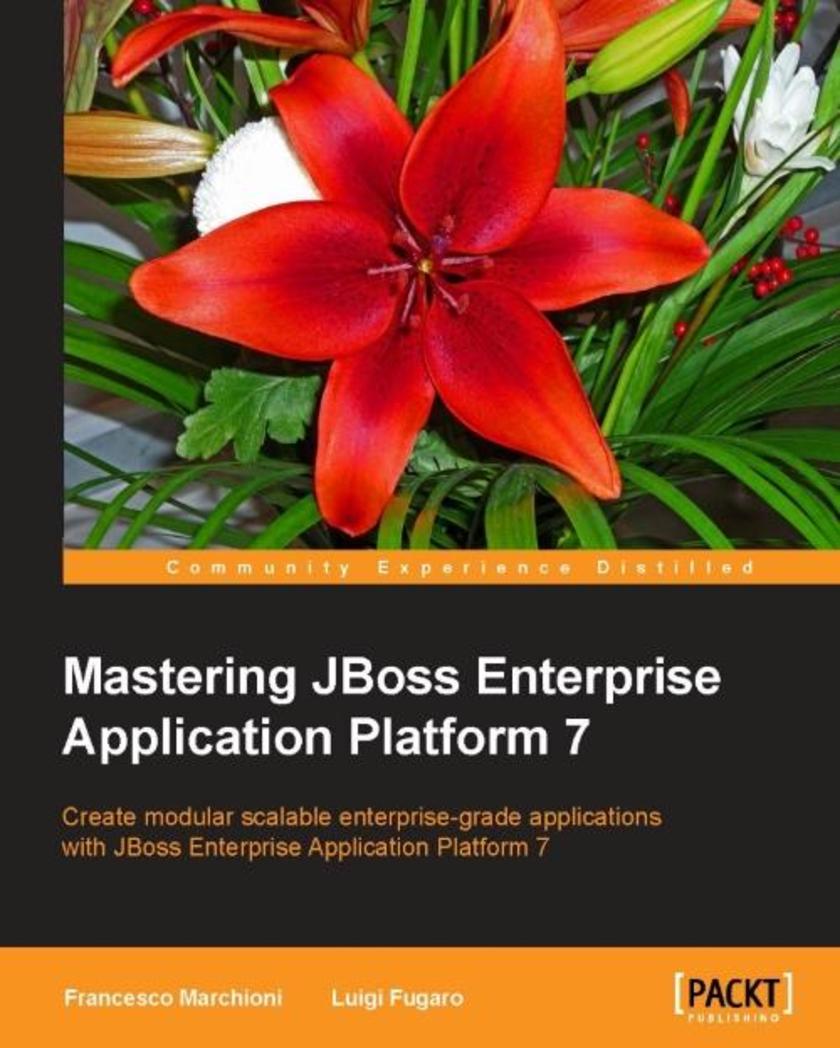
Mastering JBoss Enterprise Application Platform 7
¥99.18
Create modular scalable enterprise-grade applications with JBoss Enterprise Application Platform 7 About This Book Leverage the power of JBoss EAP 7 along with Java EE 7 to create professional enterprise grade applications. Get you applications cloud ready and make them highly scalable using this advanced guide. Become a pro Java Developer and move ahead of the crowd with this advanced practical guide. Who This Book Is For The ideal target audience for this book is Java System Administrators who already have some experience with JBoss EAP and who now want explore in depth creating Enterprise grade apps with the latest JBoss EAP version. What You Will Learn Configure services using the Command Line Interface Deliver fault tolerant server configurations Harden the application server with advanced techniques Expand the application server's horizon with tools such as like Docker/OpenShift Create enterprise ready configurations using clustering techniques. Deliver advanced security solutions and learn how to troubleshoot common network/performance issues In Detail The JBoss Enterprise Application Platform (EAP) has been one of the most popular tools for Java developers to create modular, cloud-ready, and modern applications. It has achieved a reputation for architectural excellence and technical savvy, making it a solid and efficient environment for delivering your applications. The book will first introduce application server configuration and the management instruments that can be used to control the application server. Next, the focus will shift to enterprise solutions such as clustering, load balancing, and data caching; this will be the core of the book. We will also discuss services provided by the application server, such as database connectivity and logging. We focus on real-world example configurations and how to avoid common mistakes. Finally, we will implement the knowledge gained so far in terms of Docker containers and cloud availability using RedHat's OpenShift. Style and approach If you are a Java developer who wants to level-up to modern day Java web development with the latest Java EE 7 and JBoss EAP 7, this book is the ideal solution for you. It addresses (in a clear and simple way) proof-of-concept scenarios such as clustering and cloud and container configurations, and explains how to solve common issues.
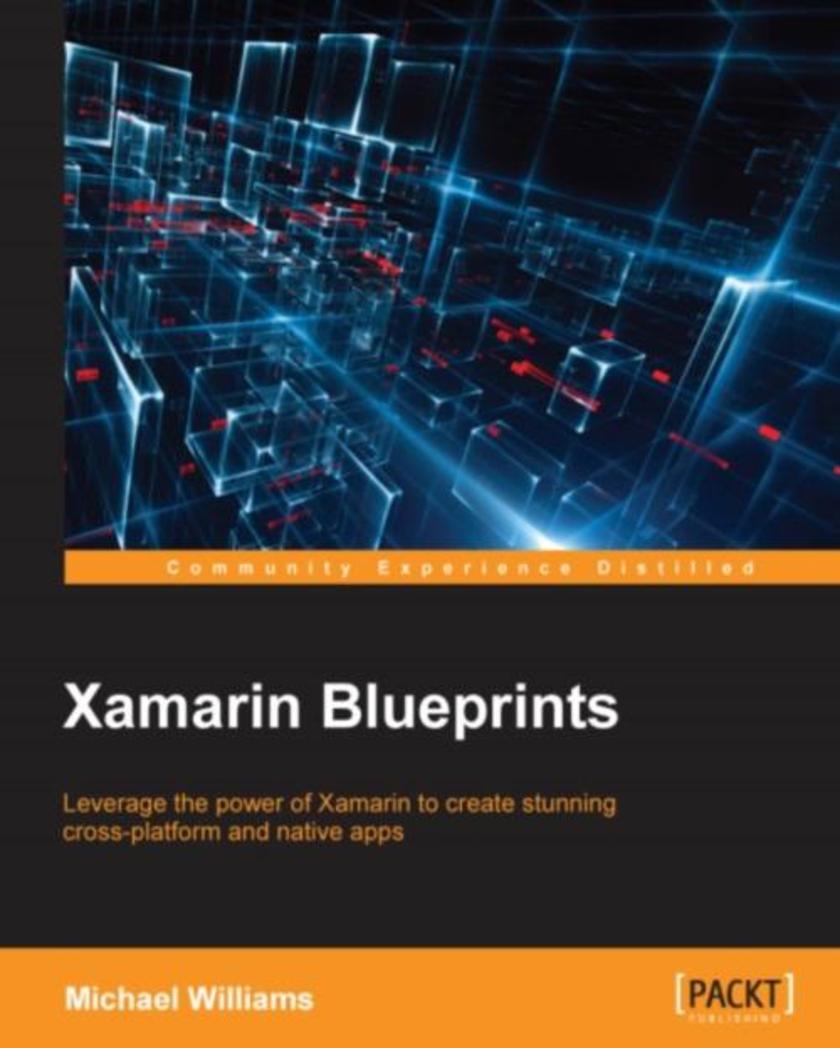
Xamarin Blueprints
¥99.18
Leverage the power of Xamarin to create stunning cross-platform and native apps About This Book Helps you get a clear practical understanding of creating professional-grade apps with Xamarin Covers Xamarin.Forms, Xamarin Android, and Xamarin iOS If you want to transform yourself from an amateur mobile developer into a professional app developer across multiple platforms, then this is the ideal book for you Who This Book Is For If you are a mobile developer looking to create interesting and fully featured apps for different platforms, then this book is the ideal solution for you. A basic knowledge of Xamarin and C# programming is assumed What You Will Learn Discover eight different ways to create your own Xamarin applications Improve app performance by using SQLite for data-intensive applications Set up a simple web service to feed JSON data into mobile applications Store files locally with Xamarin.Forms using dependency services Use Xamarin extension libraries to create effective applications with less coding In Detail Do you want to create powerful, efficient, and independent apps from scratch that will leverage the Xamarin framework and code with C#Well, look no further; you’ve come to the right place! This is a learn-as-you-build practical guide to building eight full-fledged applications using Xamarin.Forms, Xamarin Android, and Xamarin iOS. Each chapter includes a project, takes you through the process of building applications (such as a gallery Application, a text-to-speech service app, a GPS locator app, and a stock market app), and will show you how to deploy the application’s source code to a Google Cloud Source Repository. Other practical projects include a chat and a media-editing app, as well as other examples fit to adorn any developer’s utility belt. In the course of building applications, this book will teach you how to design and prototype professional-grade applications implementing performance and security considerations. Style and approach A project-based approach that will solve all your needs when it comes to creating native Android, iOS, and cross-platform apps efficiently and effectively.
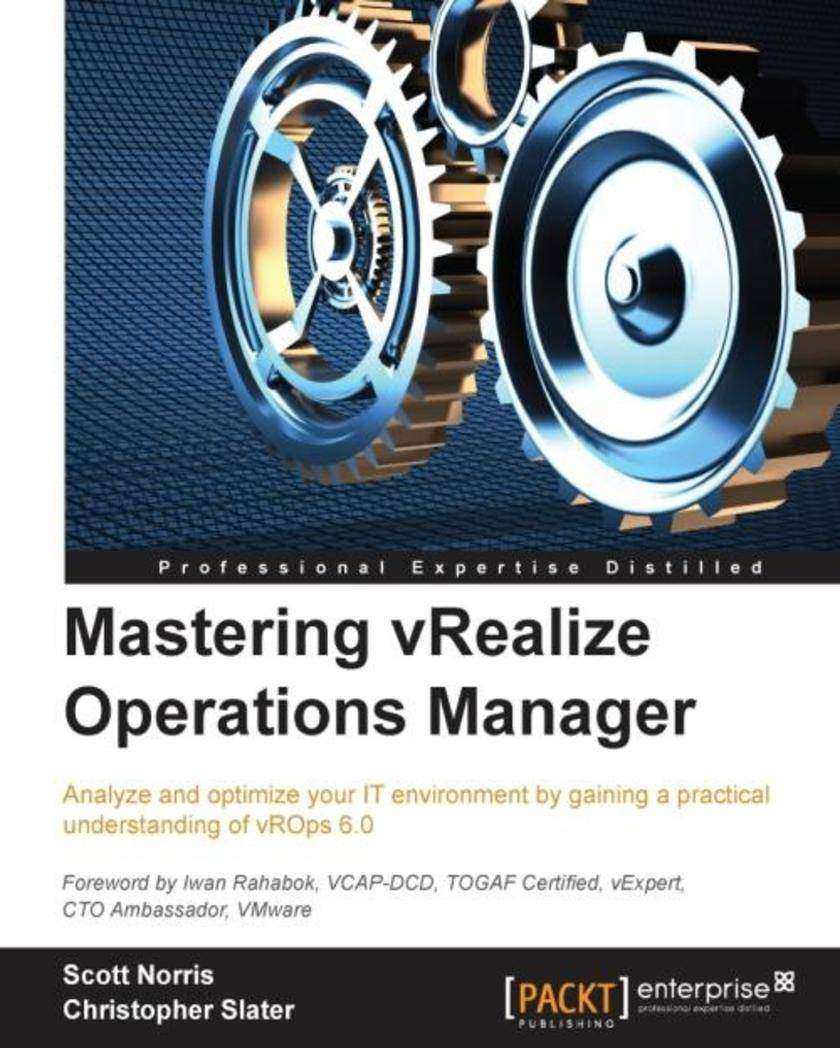
Mastering vRealize Operations Manager
¥100.27
If you are an administrator of a virtual environment and have used vROps before but want to gain a professional understanding by implementing complex tasks easily with it, then this book is for you.
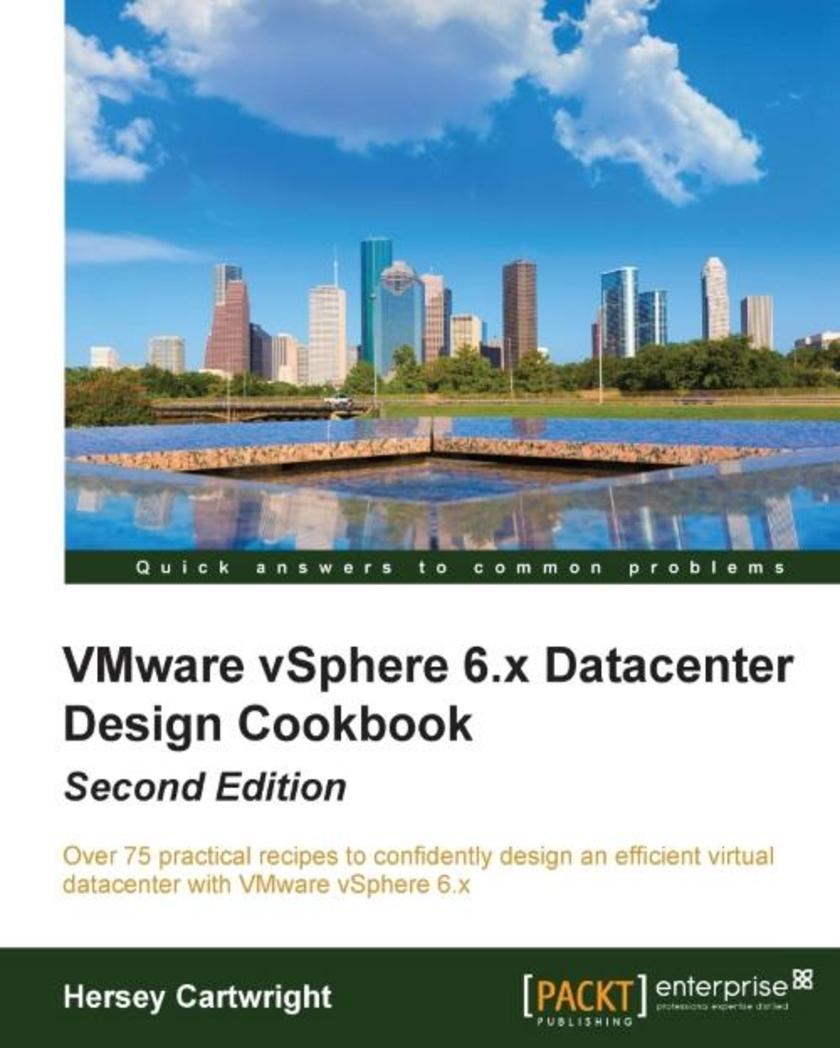
VMware vSphere 6.x Datacenter Design Cookbook - Second Edition
¥107.90
Over 75 practical recipes to confidently design an efficient virtual datacenter with VMware vSphere 6.x About This Book Get the first book on the market that helps you design a virtualized data center with VMware vSphere 6 Achieve enhanced compute, storage, network, and management capabilities for your virtual data center Exciting and practical recipes help you to design a virtual data easily by leveraging the features of VMware vSphere 6 Who This Book Is For If you are an administrator or consultant interested in designing virtualized datacenter environments using VMware vSphere 6.x or previous versions of vSphere and the supporting components, this book is for you. It will help both new and experienced architects deliver professional VMware vSphere virtual datacenter designs. What You Will Learn Identify key factors related to a vSphere design and apply them to every step of the design process Mitigate security risks and meet compliance requirements in a vSphere design. Create a vSphere conceptual design by identifying technical and business requirements Determine the type of database to use based on the deployment size. Design for performance, availability, recoverability, manageability, and security Map the logical resource design into the physical vSphere design Create professional vSphere design documentation to ensure a successful implementation of the vSphere design Leverage the latest vSphere 6.x features to ensure manageability, performance, availability, and security in a virtual datacenter design In Detail VMware is the industry leader in data center virtualization. The vSphere 6.x suite of products provides a robust and resilient platform to virtualize server and application workloads. With the release of 6.x a whole range of new features has come along such as ESXi Security enhancements, fault tolerance, high availability enhancements, and virtual volumes, thus simplifying the secure management of resources, the availability of applications, and performance enhancements of workloads deployed in the virtualized datacenter. This book provides recipes to create a virtual datacenter design using the features of vSphere 6.x by guiding you through the process of identifying the design factors and applying them to the logical and physical design process. You’ll follow steps that walk you through the design process from beginning to end, right from the discovery process to creating the conceptual design; calculating the resource requirements of the logical storage, compute, and network design; mapping the logical requirements to a physical design; security design; and finally creating the design documentation. The recipes in this book provide guidance on making design decisions to ensure the successful creation, and ultimately the successful implementation, of a VMware vSphere 6.x virtual data center design. Style and Approach The book follows a recipe-based approach that consists of practical recipes to effectively design a virtual data center.
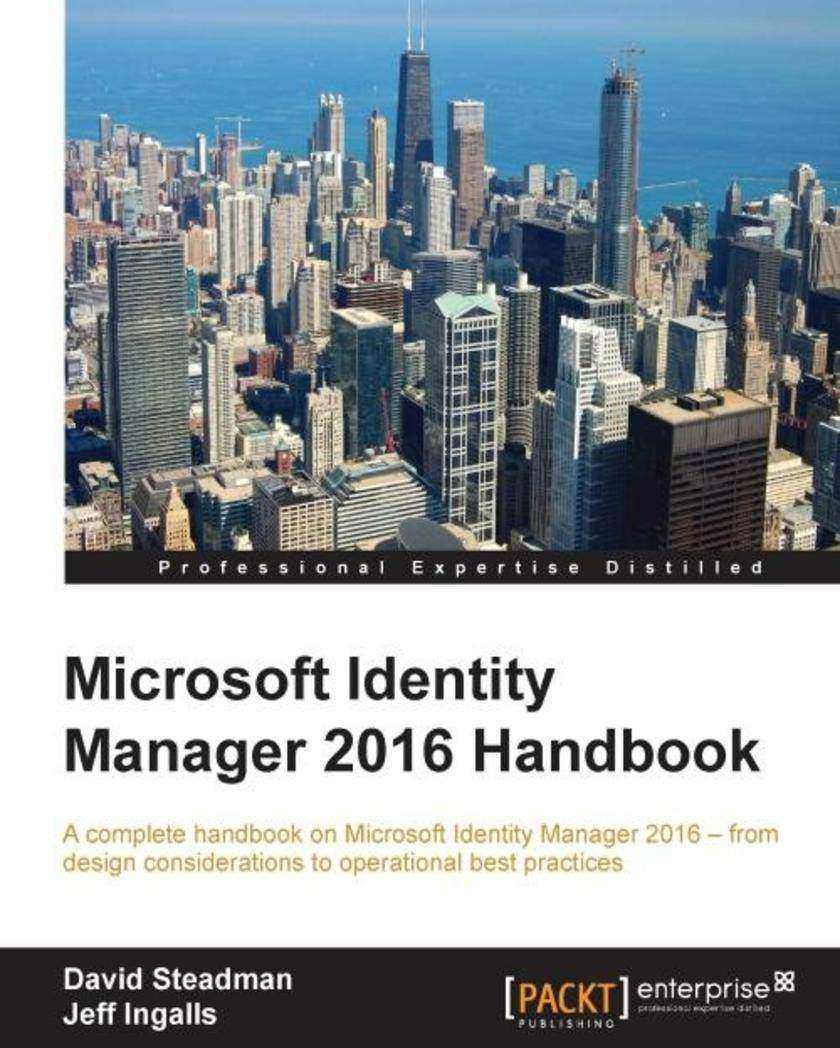
Microsoft Identity Manager 2016 Handbook
¥107.90
A complete handbook on Microsoft Identity Manager 2016 – from design considerations to operational best practices About This Book Get to grips with the basics of identity management and get acquainted with the MIM components and functionalities Discover the newly-introduced product features and how they can help your organization A step-by-step guide to enhance your foundational skills in using Microsoft Identity Manager from those who have taught and supported large and small enterprise customers Who This Book Is For If you are an architect or a developer who wants to deploy, manage, and operate Microsoft Identity Manager 2016, then this book is for you. This book will also help the technical decision makers who want to improve their knowledge of Microsoft Identity Manager 2016. A basic understanding of Microsoft-based infrastructure using Active Directory is expected. Identity management beginners and experts alike will be able to apply the examples and scenarios to solve real-world customer problems. What You Will Learn Install MIM components Find out about the MIM synchronization, its configuration settings, and advantages Get to grips with the MIM service capabilities and develop custom activities Use the MIM Portal to provision and manage an account Mitigate access escalation and lateral movement risks using privileged access management Configure client certificate management and its detailed permission model Troubleshoot MIM components by enabling logging and reviewing logs Back up and restore the MIM 2015 configuration Discover more about periodic purging and the coding best practices In Detail Microsoft Identity Manager 2016 is Microsoft’s solution to identity management. When fully installed, the product utilizes SQL, SharePoint, IIS, web services, the .NET Framework, and SCSM to name a few, allowing it to be customized to meet nearly every business requirement. The book is divided into 15 chapters and begins with an overview of the product, what it does, and what it does not do. To better understand the concepts in MIM, we introduce a fictitious company and their problems and goals, then build an identity solutions to fit those goals. Over the course of this book, we cover topics such as MIM installation and configuration, user and group management options, self-service solutions, role-based access control, reducing security threats, and finally operational troubleshooting and best practices. By the end of this book, you will have gained the necessary skills to deploy, manage and operate Microsoft Identity Manager 2016 to meet your business requirements and solve real-world customer problems. Style and approach The concepts in the book are explained and illustrated with the help of screenshots as much as possible. We strive for readability and provide you with step-by-step instructions on the installation, configuration, and operation of the product. Throughout the book, you will be provided on-the-field knowledge that you won’t get from whitepapers and help files.
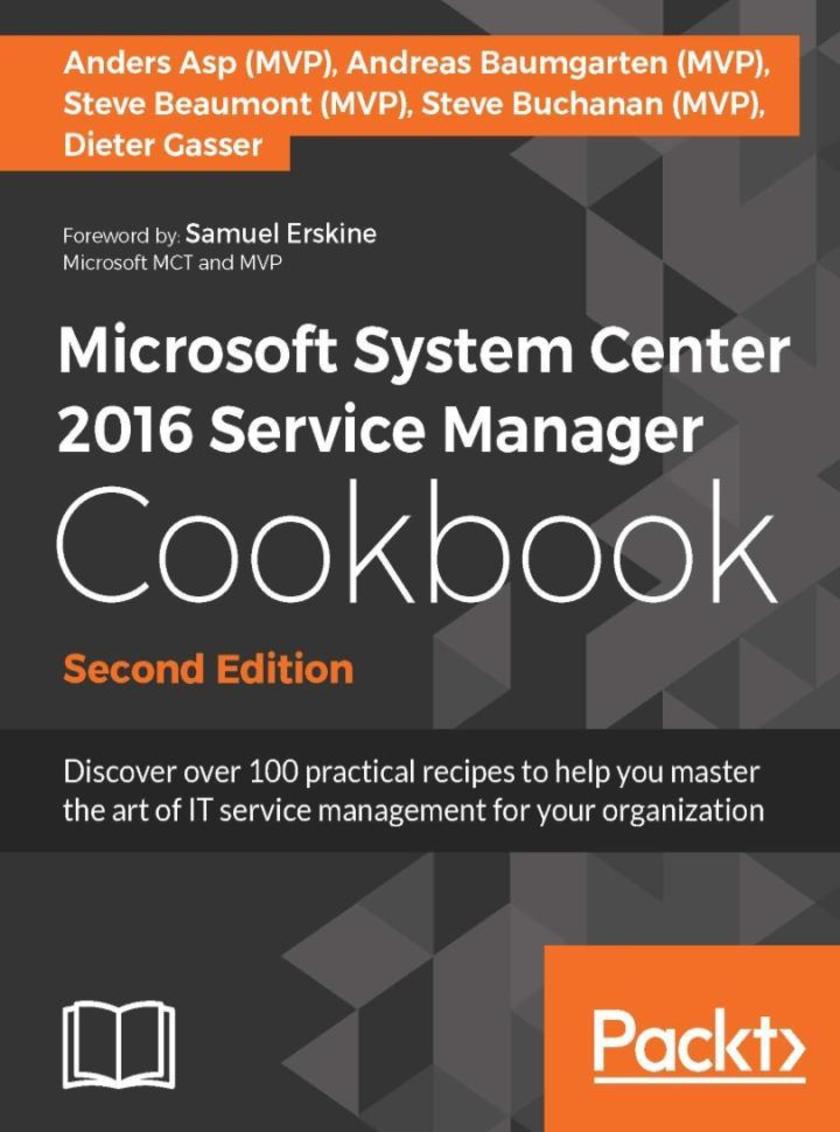
Microsoft System Center 2016 Service Manager Cookbook - Second Edition
¥107.90
Discover over 100 practical recipes to help you master the art of IT service management for your organization About This Book Unleash the capabilities of Microsoft System Center 2016 Service Manager Master the skills of configuring, deploying, managing, and troubleshooting your Service Manager 2016 This book contains practical recipes that leverage the key and newly added features and functionalities of Microsoft System Center 2016 Service Manager Who This Book Is For This book will be useful to IT professionals including SCSM administrators who want to configure and administer System Center Service Manager 2016 and understand how to solve specific problems and scenarios that arise. It will also be useful to users of Service Manager 2012 who want to learn about the new features and capabilities of the Service Manager 2016 release. It will be ideal if you have Service Manager experience as well as experience with other System Center products. What You Will Learn See a practical implementation of the ITSM framework and processes based on ITIL Deploy and configure the new Service Manager HTML5 Self-Service Portal along with Service Catalog design and configuration Get to know about Incident, Problem, and Change Management processes and configuration Get to grips with performing advanced personalization in Service Manager Discover how to set up and use automation with and within Service Manager 2016 Work with Service Manager Data Warehouse Find out what Security Roles are and how to implement them Learn how to upgrade from SCSM 2012 R2 to SCSM 2016 In Detail System Center Service Manager (SCSM) is an integrated platform that offers a simplified data center management experience by implementing best practices such as Incident Management, Service Request, and Change Control to achieve efficient service delivery across your organization. This book provides you with real-world recipes that can be used immediately and will show you how to configure and administer SCSM 2016. You’ll also find out how to solve particular problems and scenarios to take this tool further. You’ll start with recipes on implementing ITSM frameworks and processes and configuring Service Level Agreements (SLAs). Then, you'll work through deploying and configuring the HTML5 Self-Service Portal, configuring Incident and Problem Management, and designing and configuring Change and Release Management. You'll also learn about security roles and overall Microsoft SCSM 2016 administration. Toward the end of the book, we’ll look at advanced topics, such as presenting the wealth of information stored within the Service Manager Data Warehouse, standardizing SCSM deployments, and implementing automation. Style and approach This book will enlighten you on Microsoft System Center 2016 Service Manager through recipes that can be implemented directly in any enterprise. You can read the book from start to end if you’re a beginner, or just open up any chapter and start following the recipes as a reference for advanced users. This book consists of a pool of step-by-step recipes on how to perform activities in Service Manager.
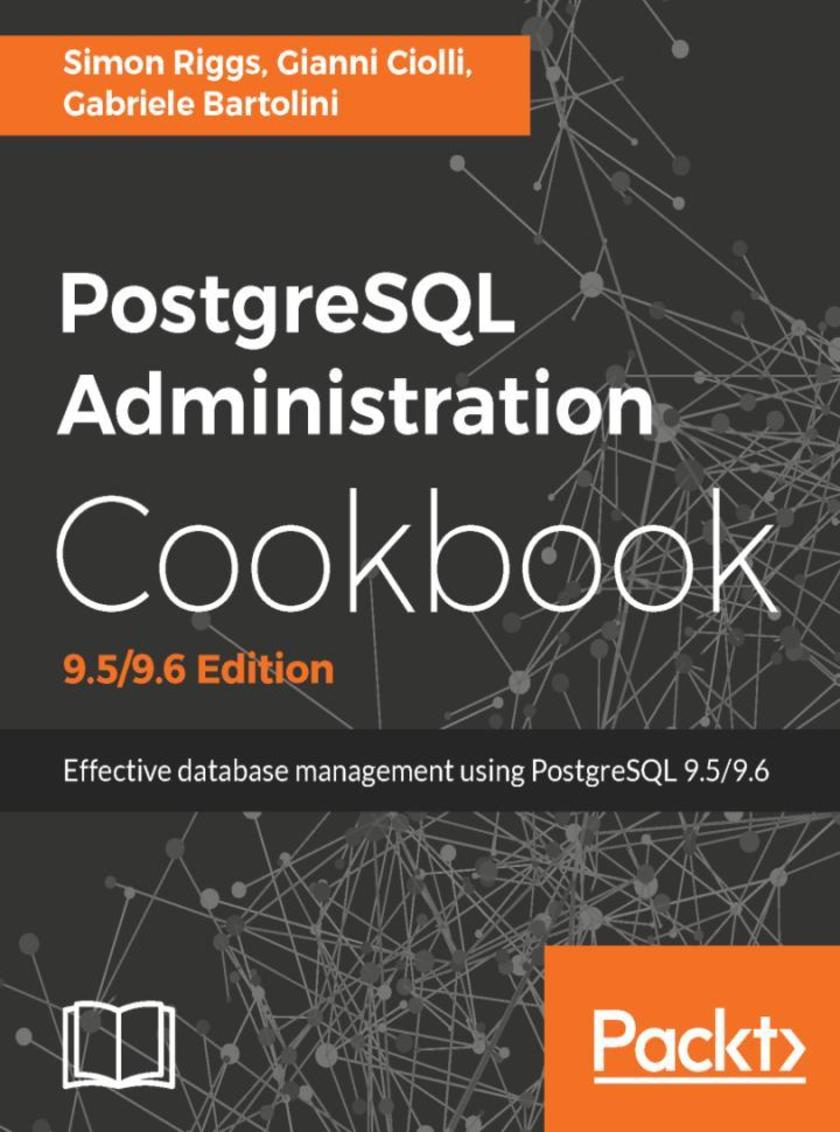
PostgreSQL Administration Cookbook, 9.5/9.6 Edition
¥107.90
Over 150 recipes to help you administer your PostgreSQL database more efficiently About This Book ?Get to grips with the capabilities of PostgreSQL 9.6 to administer your database more efficiently ?Monitor, tune, secure and protect your database ?A step-by-step, recipe-based guide to help you tackle any problem in PostgreSQL administration with ease Who This Book Is For This book is for system administrators, database administrators, data architects, developers, and anyone with an interest in planning for, or running, live production databases. This book is most suited to those who have some technical experience. What You Will Learn ?Implement PostgreSQL features for performance and reliability ?Harness the power of the latest PostgreSQL 9.6 features ?Manage open source PostgreSQL versions 9.5 and 9.6 on various platforms ?Discover advanced technical tips for experienced users ?Explore best practices for planning and designing live databases ?Select and implement robust backup and recovery techniques ?Explore concise and clear guidance on replication and high availability ?See the latest details on Logical Replication and Bi-Directional Replication In Detail PostgreSQL is a powerful opensource database management system; now recognized as the expert's choice for a wide range of applications, it has an enviable reputation for performance and stability. PostgreSQL provides an integrated feature set comprising relational database features, object-relational, text search, Geographical Info Systems, analytical tools for big data and
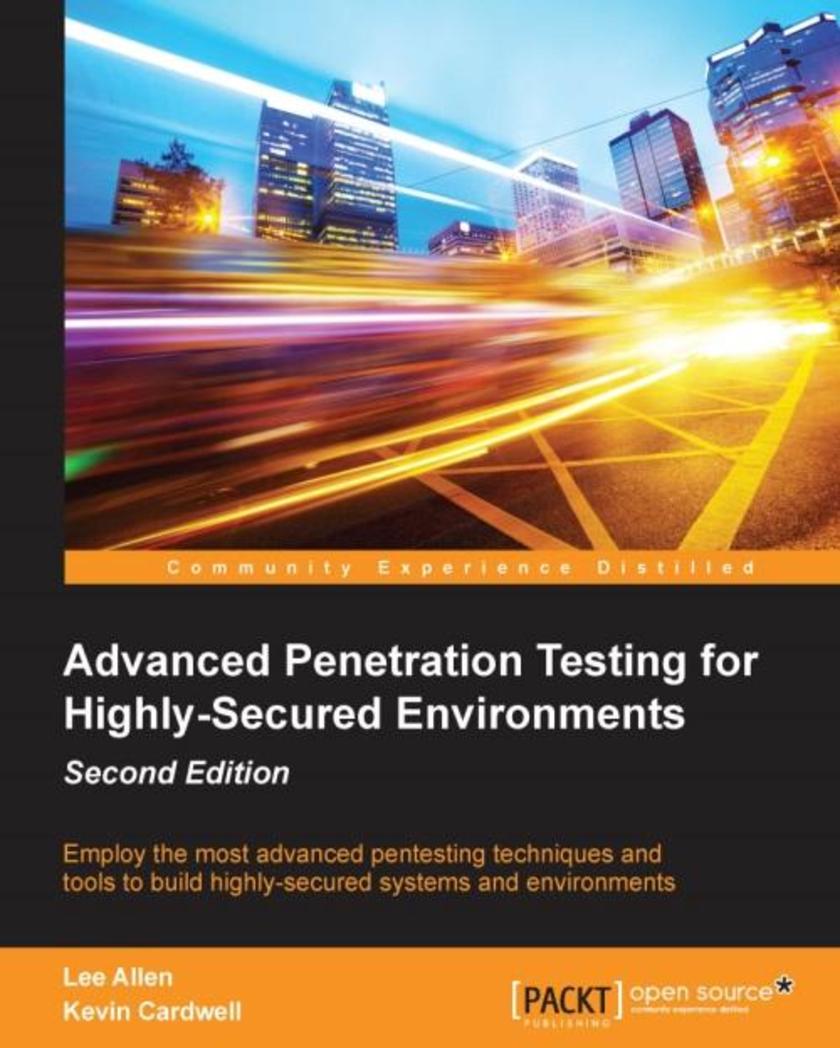
Advanced Penetration Testing for Highly-Secured Environments - Second Edition
¥107.90
Employ the most advanced pentesting techniques and tools to build highly-secured systems and environments About This Book Learn how to build your own pentesting lab environment to practice advanced techniques Customize your own *s, and learn methods to exploit 32-bit and 64-bit programs Explore a vast variety of stealth techniques to bypass a number of protections when penetration testing Who This Book Is For This book is for anyone who wants to improve their skills in penetration testing. As it follows a step-by-step approach, anyone from a novice to an experienced security tester can learn effective techniques to deal with highly secured environments. Whether you are brand new or a seasoned expert, this book will provide you with the skills you need to successfully create, customize, and plan an advanced penetration test. What You Will Learn A step-by-step methodology to identify and penetrate secured environments Get to know the process to test network services across enterprise architecture when defences are in place Grasp different web application testing methods and how to identify web application protections that are deployed Understand a variety of concepts to exploit software Gain proven post-exploitation techniques to exfiltrate data from the target Get to grips with various stealth techniques to remain undetected and defeat the latest defences Be the first to find out the latest methods to bypass firewalls Follow proven approaches to record and save the data from tests for analysis In Detail The defences continue to improve and become more and more common, but this book will provide you with a number or proven techniques to defeat the latest defences on the networks. The methods and techniques contained will provide you with a powerful arsenal of best practices to increase your penetration testing successes. The processes and methodology will provide you techniques that will enable you to be successful, and the step by step instructions of information gathering and intelligence will allow you to gather the required information on the targets you are testing. The exploitation and post-exploitation sections will supply you with the tools you would need to go as far as the scope of work will allow you. The challenges at the end of each chapter are designed to challenge you and provide real-world situations that will hone and perfect your penetration testing skills. You will start with a review of several well respected penetration testing methodologies, and following this you will learn a step-by-step methodology of professional security testing, including stealth, methods of evasion, and obfuscation to perform your tests and not be detected! The final challenge will allow you to create your own complex layered architecture with defences and protections in place, and provide the ultimate testing range for you to practice the methods shown throughout the book. The challenge is as close to an actual penetration test assignment as you can get! Style and approach The book follows the standard penetration testing stages from start to finish with step-by-step examples. The book thoroughly covers penetration test expectations, proper scoping and planning, as well as enumeration and foot printing
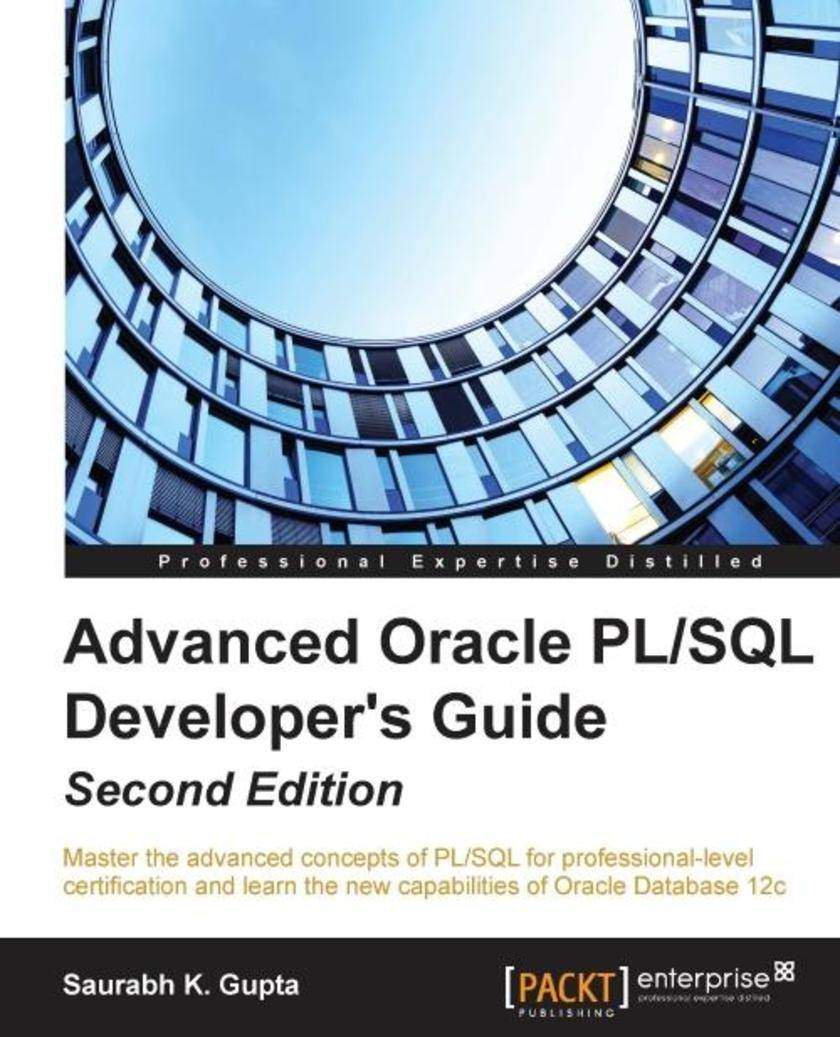
Advanced Oracle PL/SQL Developer's Guide - Second Edition
¥107.90
Master the advanced concepts of PL/SQL for professional-level certification and learn the new capabilities of Oracle Database 12cAbout This BookLearn advanced application development features of Oracle Database 12c and prepare for the 1Z0-146 examinationBuild robust and secure applications in Oracle PL/SQL using the best practicesPacked with feature demonstrations and illustrations that will help you learn and understand the enhanced capabilities of Oracle Database 12cWho This Book Is ForThis book is for Oracle developers responsible for database management. Readers are expected to have basic knowledge of Oracle Database and the fundamentals of PL/SQL programming. Certification aspirants can use this book to prepare for 1Z0-146 examination in order to be an Oracle Certified Professional in Advanced PL/SQL.What You Will LearnLearn and understand the key SQL and PL/SQL features of Oracle Database 12cUnderstand the new Multitenant architecture and Database In-Memory option of Oracle Database 12cKnow more about the advanced concepts of the Oracle PL/SQL language such as external procedures, securing data using Virtual Private Database (VPD), SecureFiles, and PL/SQL code tracing and profilingImplement Virtual Private Databases to prevent unauthorized data accessTrace, analyze, profile, and debug PL/SQL code while developing database applicationsIntegrate the new application development features of Oracle Database 12c with the current conceptsDiscover techniques to analyze and maintain PL/SQL codeGet acquainted with the best practices of writing PL/SQL code and develop secure applicationsIn DetailOracle Database is one of the most popular databases and allows users to make efficient use of their resources and to enhance service levels while reducing the IT costs incurred. Oracle Database is sometimes compared with Microsoft SQL Server, however, Oracle Database clearly supersedes SQL server in terms of high availability and addressing planned and unplanned downtime. Oracle PL/SQL provides a rich platform for application developers to code and build scalable database applications and introduces multiple new features and enhancements to improve development experience.Advanced Oracle PL/SQL Developer's Guide, Second Edition is a handy technical reference for seasoned professionals in the database development space. This book starts with a refresher of fundamental concepts of PL/SQL, such as anonymous block, subprograms, and exceptions, and prepares you for the upcoming advanced concepts. The next chapter introduces you to the new features of Oracle Database 12c, not limited to PL/SQL. In this chapter, you will understand some of the most talked about features such as Multitenant and Database In-Memory. Moving forward, each chapter introduces advanced concepts with the help of demonstrations, and provides you with the latest update from Oracle Database 12c context. This helps you to visualize the pre- and post-applications of a feature over the database releases. By the end of this book, you will have become an expert in PL/SQL programming and will be able to implement advanced concepts of PL/SQL for efficient management of Oracle Database.Style and approach The book follows the structure of the Oracle Certification examination but doesn't restrict itself to the exam objectives. Advanced concepts have been explained in an easy-to-understand style, supported with feature demonstrations and case illustrations.
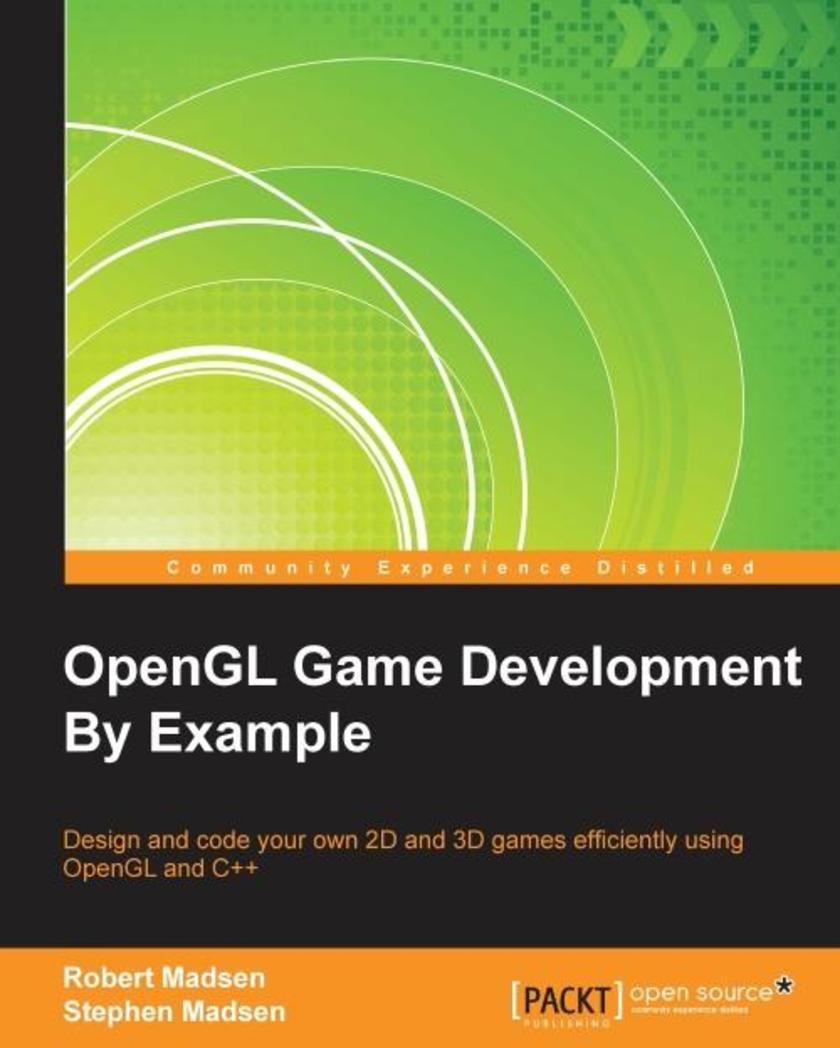
OpenGL Game Development By Example
¥107.90
Design and code your own 2D and 3D games efficiently using OpenGL and C++ About This Book Create 2D and 3D games completely, through a series of end-to-end game projects Learn to render high performance 2D and 3D graphics using OpenGL Implement a rudimentary game engine using step-by-step code Who This Book Is For If you are a prospective game developer with some experience using C++, then this book is for you. Both prospective and experienced game programmers will find nuggets of wisdom and practical advice as they learn to code two full games using OpenGL, C++, and a host of related tools. What You Will Learn Set up your development environment in Visual Studio using OpenGL Use 2D and 3D coordinate systems Implement an input system to handle the mouse and the keyboard Create a state machine to handle complex changes in the game Load, display, and manipulate both 2D and 3D graphics Implement collision detection and basic physics Discover the key components needed to complete a polished game Handle audio files and implement sound effects and music In Detail OpenGL is one of the most popular rendering SDKs used to develop games. OpenGL has been used to create everything from 3D masterpieces running on desktop computers to 2D puzzles running on mobile devices. You will learn to apply both 2D and 3D technologies to bring your game idea to life. There is a lot more to making a game than just drawing pictures and that is where this book is unique! It provides a complete tutorial on designing and coding games from the setup of the development environment to final credits screen, through the creation of a 2D and 3D game. The book starts off by showing you how to set up a development environment using Visual Studio, and create a code framework for your game. It then walks you through creation of two games–a 2D platform game called Roboracer 2D and a 3D first-person space shooter game–using OpenGL to render both 2D and 3D graphics using a 2D coordinate system. You'll create sprite classes, render sprites and animation, and navigate and control the characters. You will also learn how to implement input, use audio, and code basic collision and physics systems. From setting up the development environment to creating the final credits screen, the book will take you through the complete journey of creating a game engine that you can extend to create your own games. Style and approach An easy-to-follow guide full of code examples to illustrate every concept and help you build a 2D and 3D game from scratch, while learning the key tools that surround a typical OpenGL project.
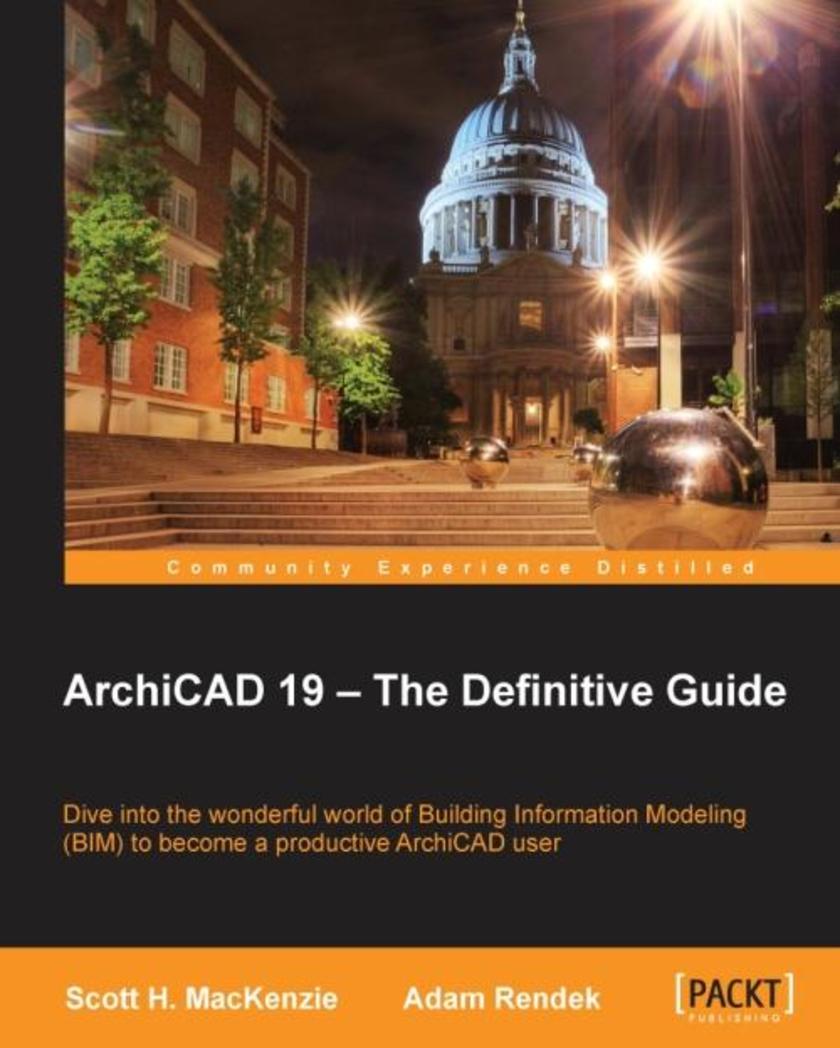
ArchiCAD 19 – The Definitive Guide
¥107.90
This book is for architects, architectural technicians, and construction professionals who are familiar with 2D CAD programs such as AutoCAD Lite, or have some exposure to a 3D BIM package such as Revit. No experience with ArchiCAD is required. If you want to learn the skills needed for architectural drawing production in the real world, then this book is for you.
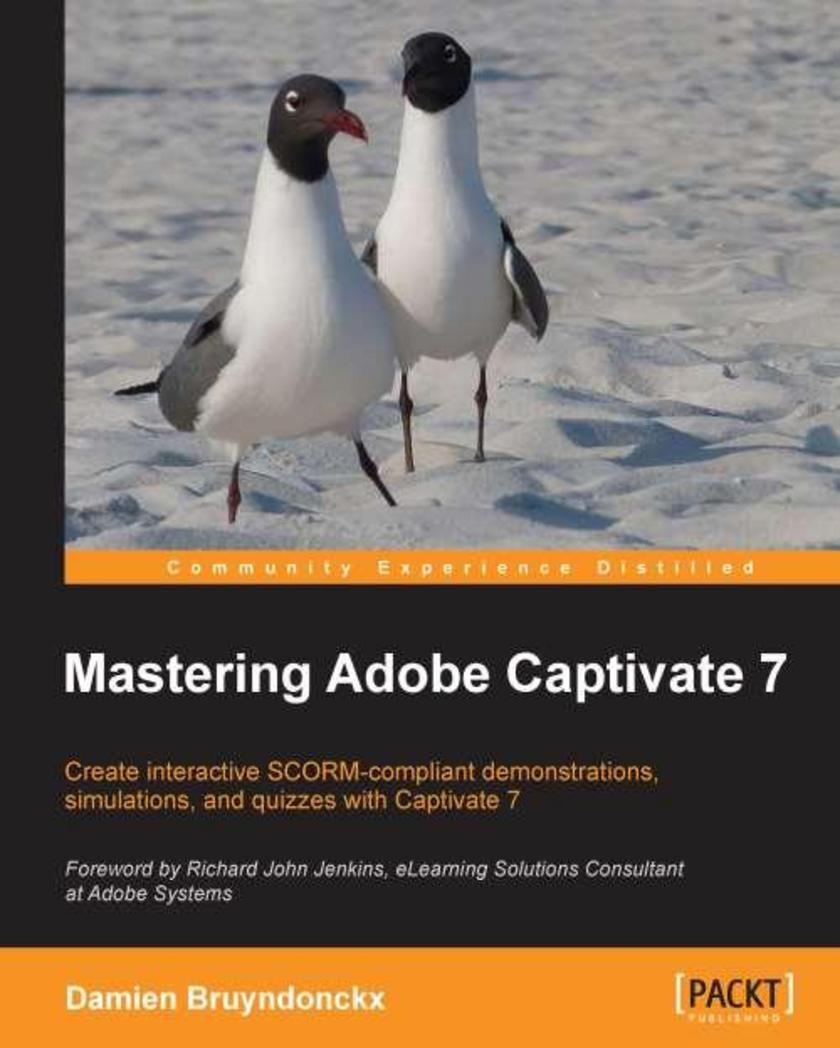
Mastering Adobe Captivate 7
¥107.90
A comprehensive tutorial packed with examples, which is divided into small subtopics that follows a clear and logical outline to help you get to grips with Adobe Captivate 7. Readers are also encouraged to develop their understanding of the tool through practical exercises and experimentations in every chapter. A lot of external references and tips and tricks from established eLearning professionals are also included. If you are a designer, eLearning developer, or webmaster who wants to construct an interactive and funfilled eLearning project using Adobe Captivate 7, this book is ideal for you. Just a basic knowledge of operating system is expected from the developers interested in this book.
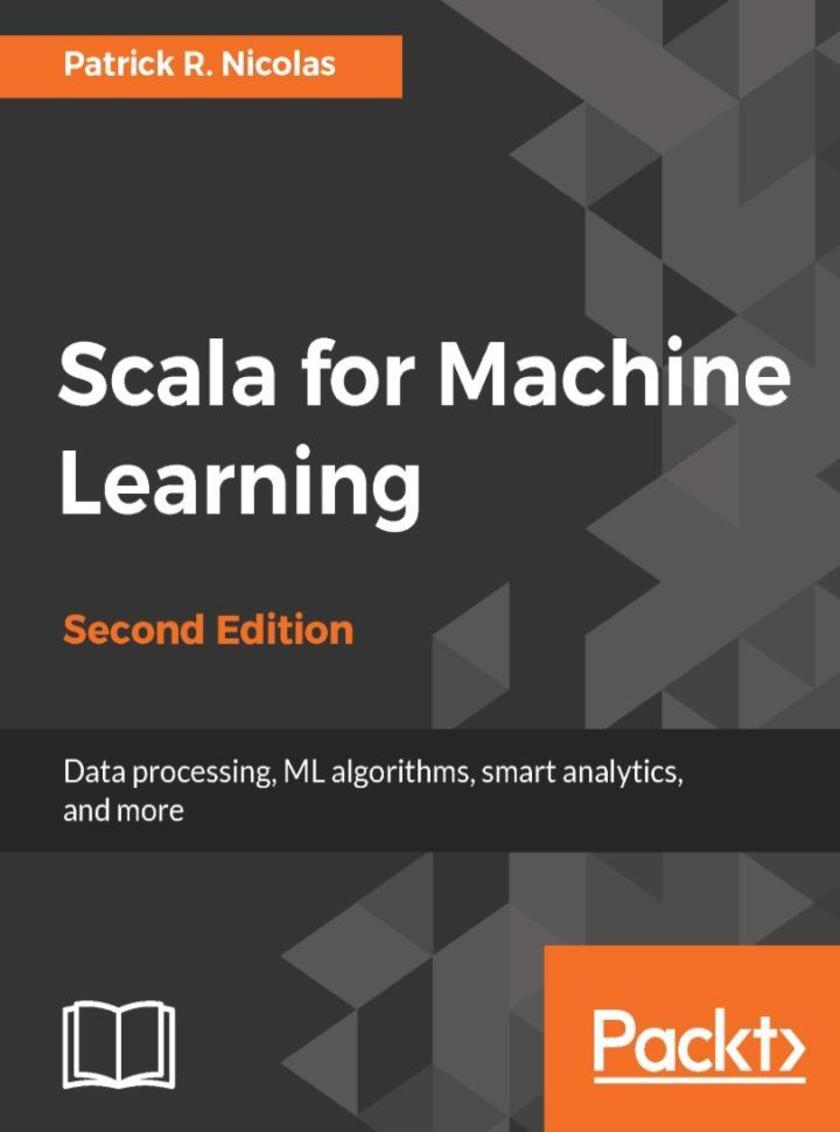
Scala for Machine Learning - Second Edition
¥107.90
Leverage Scala and Machine Learning to study and construct systems that can learn from data About This Book ? Explore a broad variety of data processing, machine learning, and genetic algorithms through diagrams, mathematical formulation, and updated source code in Scala ? Take your expertise in Scala programming to the next level by creating and customizing AI applications ? Experiment with different techniques and evaluate their benefits and limitations using real-world applications in a tutorial style Who This Book Is For If you’re a data scientist or a data analyst with a fundamental knowledge of Scala who wants to learn and implement various Machine learning techniques, this book is for you. All you need is a good understanding of the Scala programming language, a basic knowledge of statistics, a keen interest in Big Data processing, and this book! What You Will Learn ? Build dynamic workflows for scientific computing ? Leverage open source libraries to extract patterns from time series ? Write your own classification, clustering, or evolutionary algorithm ? Perform relative performance tuning and evaluation of Spark ? Master probabilistic models for sequential data ? Experiment with advanced techniques such as regularization and kernelization ? Dive into neural networks and some deep learning architecture ? Apply some basic multiarm-bandit algorithms ? Solve big data problems with Scala parallel collections, Akka actors, and Apache Spark clusters ? Apply key learning strategies to a technical analysis of financial markets In Detail The discovery of information through data clustering and classification is becoming a key differentiator for competitive organizations. Machine learning applications are everywhere, from self-driving cars, engineering design, logistics, manufacturing, and trading strategies, to detection of genetic anomalies. The book is your one stop guide that introduces you to the functional capabilities of the Scala programming language that are critical to the creation of machine learning algorithms such as dependency injection and implicits. You start by learning data preprocessing and filtering techniques. Following this, you'll move on to unsupervised learning techniques such as clustering and dimension reduction, followed by probabilistic graphical models such as Na?ve Bayes, hidden Markov models and Monte Carlo inference. Further, it covers the discriminative algorithms such as linear, logistic regression with regularization, kernelization, support vector machines, neural networks, and deep learning. You’ll move on to evolutionary computing, multibandit algorithms, and reinforcement learning. Finally, the book includes a comprehensive overview of parallel computing in Scala and Akka followed by a de*ion of Apache Spark and its ML library. With updated codes based on the latest version of Scala and comprehensive examples, this book will ensure that you have more than just a solid fundamental knowledge in machine learning with Scala. Style and approach This book is designed as a tutorial with hands-on exercises using technical analysis of financial markets and corporate data. The approach of each chapter is such that it allows you to understand key concepts easily.

Microsoft Dynamics GP 2010 Cookbook
¥107.90
As a cookbook, this book enables you to solve real-world Dynamics GP problems with immediately useable recipes that unleash the powerful functionality of Dynamics GP. The book provides tips, techniques, and solutions designed to show users how to improve their use of Dynamics GP, not simply perform basic tasks. If you are a Dynamics GP user or Dynamics GP partner primarily focused on delivering time-proven application optimizations, then this book is for you. This book assumes that you have a basic understanding of business management systems, with basic knowledge of Microsoft Dynamics GP. All the recipes are real-world tested and designed to be used immediately.




 购物车
购物车 个人中心
个人中心



